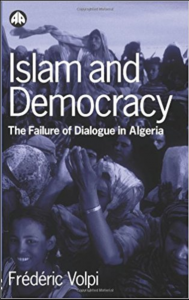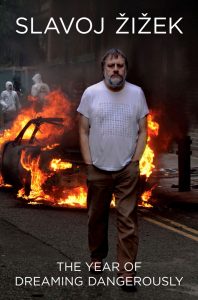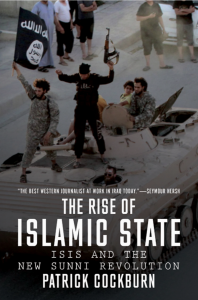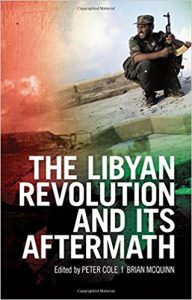(Isabella and Sophia and David)
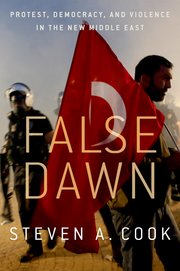
Chapter 1: Freedom’s Ride
Long-time observers of regimes in the Middle East and North Africa were well-aware of issues present in the region, but the series of revolutions that took place in the region in 2011 and the following years still took many by surprise. Among those taken by surprise was the United States government. Under the leadership of President Obama, the administration valued stability over democratization, and while they began to support the process as regime change appeared inevitable in many states, they also feared who might fill the power vacuums that would follow uprisings in the region.
Many media observers were more hopeful. Many assumed that the revolutions occurring in the region were sure to bring democracy. Looking to the governing AKP party in Turkey as a model, they viewed Islamist parties as effective potential forces for democracy, ignoring the issues present in the Turkish system.
Academics brought more nuance to the conversation. Scholars had long understood authoritarian regimes to be stable and knew that such regimes could use the tools of democracy as a way to strengthen their power. However, the focus paid to explaining the stability of regimes caused many scholars to overlook factors such as militaries, neo-Liberalism, and pan-Arabism, ultimately causing them to miss the signals of impending change. While many scholars reversed course in the aftermath of the so-called “Arab Spring,” insisting that democratic change was soon to come, Cook argues that they got the dynamics of authoritarian regimes partially right. While authoritarian regimes are indeed durable, he claims, academics simply misjudged their stability.
Chapter 2: Bread! Freedom! Social Justice!
In the aftermath of the uprisings of 2011, many observers drew a line between the unrest and economic concerns. Cook concedes that there is some truth to this argument. Following independence from colonial powers, there was a general move first to centralized economies and then to privatization and neoliberal. While this development brought some economic prosperity, it failed to address many underlying issues in the economic system, leaving high unemployment throughout the region. However, the so-called “Arab Spring” occured at a moment of relative prosperity, indicating that these social movements were driven by much more than simple economic grievances.
Because of what they saw as economic success, regimes in the Middle East and North Africa were taken by surprise by popular movements in their countries and tried to explain them away with old work from scholars like Samuel Huntington that argued that economic success bred political instability, but Cook claims that the source of the protests was a more complicated mix of social, economic, and political concerns. Protesters rallied against what they saw as broken social contracts between themselves and their governments, calling for democracy and dignity.
The conflict between power and powerlessness, Cook writes, is vital in understanding these movements. Many states in the region had histories of repression and police abuses with no accountability. While governments claimed to give their citizens rights, these liberties often existed only on paper, hiding regimes that didn’t care about their citizens. Many of the groups most involved in the protests were the same groups that suffered the most repression under autocratic regimes.
Outside groups such as the United States State Department failed to recognize the call for dignity. They heard economic concerns raised and proposed economic development as a solution without realizing that what was really being expressed was a call for the much broader idea of prosperity. While protesters did want economic improvements and democratization, structural reforms to ensure dignity and success were far more important to many.
Chapter 3: Unraveling
Cook goes on to discuss in greater detail the barricades that prevented the uprisings in 2011 throughout the Arab world to result in democracies. He begins by analyzing Egypt’s authoritarian rule and uprisings in 2011. After Mubarak was ousted, Egyptians continued to protest in Tahrir Square, and security forces continued violently cracking down on protesters. The difference between these protests and those asking for Mubarak to leave is the confusion, and lack of direction. While protests asking to end Mubarak’s rule had a clear and definitive goal, protests post “the Arab spring” were ambiguous, and not always well understood. When Morsi, a member of the Muslim Brotherhood, was elected president, he made the mistake of “pursuing authoritarian measures in the name of democracy” (111). Cook stresses the difficulty the Muslim Brotherhood had in understanding that emphasizing democracy is the best way to ensure democracy. In their attempts to secure a ‘changed’ Egypt, Morsi and his political party revived Mubarak-era laws and systems of policing and elections, creating more uncertainty and violence. Morsi was quickly overthrown by a coup d’état in July 3, 2013.
Turkey’s evolution from democracy to authoritarianism is then analyzed in great detail. Erdogan and his Justice and Development Party (AKP) initially promised a third option for religion and democracy; AKP promised to be a religious party, and to embrace Islam in Turkey, while maintaining a secular state. The party provided a commitment to democracy, allowing the Kurds greater autonomy and more transparent national elections, while at the same time embracing religious conservatives. However, in reality, Erdogan’s Turkey was a deep state of secret police and informants, ensuring that no one would challenge Erdogan’s system. Turkey’s president became more and more paranoid, banning aspects of social media, and publicly denouncing Gülen, an outspoken enemy of Erdogan’s regime, living in exile in Pennsylvania. Turkey’s authoritarian turn prevented plausible hopes of Turkey entering the European Union, and continued to oppress those who spoke out. After the failed July 2016 coup, 67,000 police officers, soldiers, teachers, judges and citizens were arrested, suspended, or fired (121). Journalists saw freedom of press decrease substantially.
Illiberal and populist returns from democratic promises also amassed in Libya after the 2011 uprisings. When Qaddafi was killed, Libyan forces divided into East and West. A new president, Mohammed al-Magariaf, attempted to create a national government, but it seemed to tilt towards the east. When the US embassy was stormed, killing Ambassador Stevens and three other Americans, Libya seemed to escalate once again into crisis. Violent and more complicated than originally expected, Cook emphasizes the strange dichotomy of foreign diplomat’s celebrating each and every new head of state and small move towards democracy in Libya, while Libya fails to find even a glimmer of stability or democracy.
Finally, Tunisia’s relative success is noted a tentative and vulnerable process. Cook recounts current president Beji Caid Essebsi’s coded, yet clear, language against Ennahda, and his Ben Ali-like attempts to appease Western, ‘modern’, governments. Representing Nidaa Tounes, the regime before the uprisings, Essebsi seemed to effectively clean his hands of his involvement with the dictatorship. The National Constituent Assembly created a Troika government and worked to create a fair constitution. However, Cook points out Essebsi’s strange role in the old regime, and reversions back to old-regime-like behavior: Police did little to stop attempts on the attacks of the US embassy in Tunis, or the American School in Tunis, and the Tunisian elite remained intact. The Nobel Peace Prize award to the National Dialogue Quartet in Tunisia was seen as a push to continue the difficult, and fragile, attempts at democracy at play in Tunisia.
Cook goes into detail not only about the historical happenings after the uprisings in Egypt, Turkey, Libya and Tunisia, but then goes forward to analyze the countries’ difficulty to create democracies. His analysis is careful, and often nuanced. After discussing the barriers to open democracies after the uprisings in 2011, Cook leads into his next chapter, forcing the question, why was it more likely that these countries would not succeed as direct democracies when so many voices called for change?
Chapter 4: What Went Wrong
Cook begins this chapter by warning readers about simplifications made in various parts of the world (the United States, Saudi Arabia, Europe), about the ‘Arab spring’ and its similarities to Iraq and terrorism. He carefully notes that while extremism and terrorism do indeed plague the region, blaming the difficult road to democracy on extremism is too convenient of an excuse. Rather, he pushes for a deeper look into the failure to create actual change, democratic development, or overthrow the old-regimes’ elite.
The word revolution is questioned, as none of the studied countries went through the social revolutions necessary to lead to citizen-led democracy. Rather, social and political legacies continued to prop up the Egyptian elite and Mubarak-like policies in Egypt, the Tunisian-elite and members of the old regime in Tunisia, a lack of institutionalism in Libya, and corruption and authoritarianism in Turkey. In order to reach the perfect political equilibrium, each government post the uprisings managed to balance a display of democracy, and underlying authoritarianism.
Institutions, as well as the elite, tend to stick around, even after regime changes. Libya’s lack of institutions created utter chaos. Tunisia’s careful institutionalization of the country prepared its people for a relatively better success story, but still managed to keep Essebsi, a member of the old-regime, in power. Importantly, Cook discusses laws like the Organic Law number 22 (158) in Tunisia that allowed the government to imprison people based on vague links to terrorism. These laws actually allowed leaders post-uprisings to oppress their opponents, just as their predecessors did. For example, in April 2016, the Tunisian government accused 157 civil society organizations of links to terrorism, claims that are “vague, at best” (159). Similarly, in Turkey, leadership used the judiciary and prosecutors for political advantage. In Egypt, anti-terror laws under Sisi “ensured democracy while in actuality imprisoning opponents” (178). Cook underlines the difficulty of creating change when the elite, legal systems, and institutions remained the same, merely under the veil of different names.
Finally, Cook discusses identity after the ‘Arab spring’. He discusses the difficulties of land masses cut-up by colonial powers coming together despite varying tribes and traditions, particularly in Libya. He notes Turkey’s “Kurd problem” (188), and each country’s difficulties tying together Islam and democracy. In looking to the relative success of the Islamic State, Cook notes that their ability to pander to people who feel lost without a strong sense of national identity, like the Kurds, or a member of Ennahda in Tunisia, or someone in a rural area. In analyzing what ‘went wrong’ after the uprisings, Cook points to each country’s inability to create a sense of unity and national identity, and notes how the Islamic State thrived by filling that hole.
Chapter 5: “Getting the Middle East Right”
The title of this chapter describes the impossible. Getting the Middle East “right”, at least for the time being, is not something that the United States is capable of doing. Within these pages, Steven A. Cook sheds light on the “America, the savior, complex” and illustrates the reality that only those in the Middle East can save themselves. Because the conflict in the region dates back to inherent systemic governing differences, international actors understand little of the history that lies beneath surface of the struggles in the Middle East. In this chapter, the author recounts several intervention attempts made by the United States and other countries to remedy the region but explains how the essence of their failures lies in the discrepancies between Western values and Middle Eastern ideologies. He focuses on the Bush and Obama administrations, before, during, and after the 2011uprisings, noting how the optimism in their strategies of establishing partnerships with countries in the region like Egypt, Tunisia, and Turkey to combat the crisis ignored the realities of what what actually happening, considering that those countries were by some manner relative exceptions to the rule. By looking at the conflict through a lens positioned on the Arab and Muslim world but located in Washington, the United States never has and never will be able to successfully implement change. Instead, Cook suggests that America can be a leader, but she must be a leader from the sidelines and abandon her overbearing power stance. Additionally, if America and other countries are to intervene, they must do so without disrupting and then abandoning the state to fend for itself when it its most vulnerable. Imposing Western values onto a region that is struggling to bring about democracy on its own goes against the core of the concept. It has to be for the people, by the people. America can and must help, he notes, but America must also let the people help themselves.
Chapter 6: Freedom Interrupted
In this final chapter, Steven A. Cook explores the reality of the Middle East region and the sad truth that dusk, rather than dawn, is cast upon it. He questions the future of these countries and reveals an often dismissed perspective that despite the apparent, slow and minor, progress, the Middle East will be chronically and violently unstable. He concludes with a sense of cynicism and pessimism that unfortunately paints a picture of what he sees the future to look like. He recalls several failed attempts at catalyzing earth shattering change in Tunisia, Libya, Turkey, and Egypt but awakens us, forcing us to open our eyes and distinguish between the ostensible and the apparent.
Overall Review
In False Dawn, Steven Cook to shift the narrative of the so-called “Arab Spring.” Cook tries to show that the situation in the Middle East following the uprisings in 2011 has been misunderstood and misinterpreted on all sides. He shows the story told by governments, media institutions, and academics of profound change in the region that would result in more just and democratic governments and societies. He then proceeds to challenge this view, presenting an alternate telling of the “Arab Spring” abandons the optimism so common in early analyses and introduces a more nuanced understanding of changed in the region.
Cook describes uprisings that are more complex than a simple response to economic factors. In his telling, social movements were predicated on a complex mixture of factors, but at the center of these movements was a call for dignity. While these movements caused great change in the region, toppling governments in some cases, their long-term effects were far less dramatic. Some governments remained in place with little change. Elsewhere, non-democratic institutions persisted, and some states were simply thrown into chaos. The democracies that did result teetered on the brink of failure, and as a result, Cook argues, little changed, and the lives of relatively few were substantially improved. The book takes a thoroughly pessimistic view, painting a picture of a region that cannot change for the better through foreign intervention and seems unlikely to do so on its own accord.
Cook dives deep in his analysis, tracking the change in the ways the region has been understood since 2011 and before. It expands the conversation beyond a set of simplistic variables and portrays a rich and complicated region. Economic concerns and political institutions play an important role in his analysis, but he moves beyond these concerns, emphasizing the role of dignity and the pursuit of prosperity in social movements. In his telling, these are powerful forces, but they ultimately fall short of creating fully free and democratic societies, impeded by legacies and systems that resist change.



